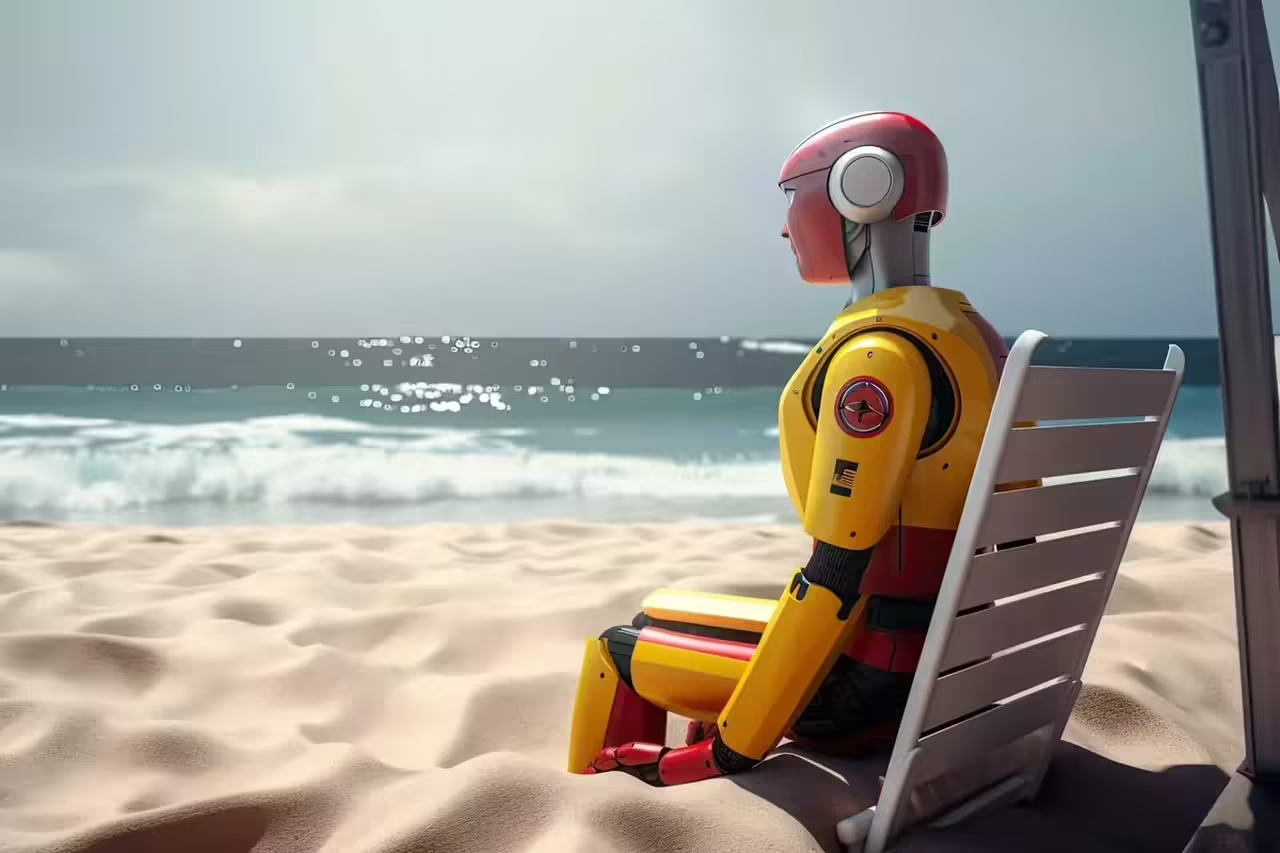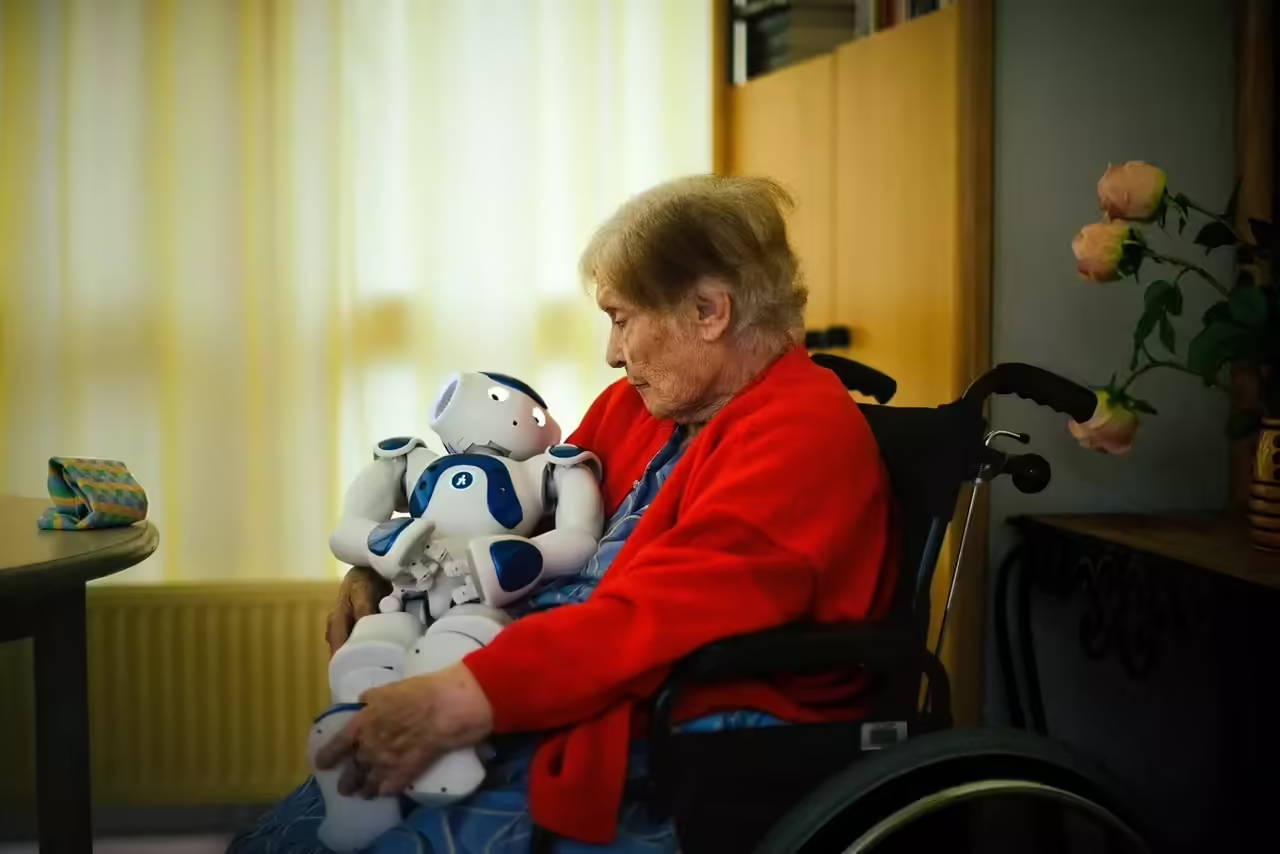
Technological advancement has reached unthinkable places, and the beach shore is no exception. In an increasingly automated world, robotic innovation has found its way to one of the most iconic and beloved environments: the beach. Where once only sand, waves and sunbathers were seen, silent guardians of metal and circuitry are now emerging, transforming beach safety and rescue into a whole new experience. In this article, we’ll explore how robotic technology is revolutionizing shore safety and rescue.
The Evolution of Coastal Safety
Beaches have always been a place of recreation and relaxation, but they can also be dangerous environments. From treacherous waves to unpredictable rip currents, challenges at the shore are constant and often deadly. The safety of beachgoers has traditionally been entrusted to lifeguards, who patrol the beaches with their trained eyesight looking for signs of danger. However, robotic technology is changing this dynamic.
Beach safety robots are designed to constantly monitor the marine and terrestrial environment. Equipped with advanced sensors, high-resolution cameras and detection systems, these automatons can identify potential hazards, such as rip currents, tidal changes or even the presence of sharks. They also have the ability to alert human watchstanders and beachgoers in real time, providing an additional layer of protection.
Robotic Rescue: When Every Second Counts
One of the biggest advances in beach safety is the development of rescue robots. When it comes to saving lives in critical situations, every second counts, and this is where robotic technology can make a significant difference. Rescue robots are equipped with a variety of tools and technologies that enable them to efficiently navigate tumultuous waters and provide vital assistance in crucial moments.
Some of these robots are designed to perform rescues in extreme situations, such as when a person is trapped in an undertow current. These automatons can quickly swim to the victim, provide flotation and, in some cases, even tow the victim safely back to shore. In addition, these rescue robots can relay real-time information to human rescue teams, enabling more effective coordination and informed decision making.
Challenges and Future of Beach Innovation
Despite the obvious benefits, the introduction of robots into the beach environment is not without its challenges. Community acceptance, interaction with beachgoers, and the ability of robots to adapt to changing sea conditions are just some of the issues that need to be carefully addressed. In addition, investment in robotic technology and the training required to operate and maintain these systems are also important considerations.
As robotic technology continues to advance, the future of beach safety and rescue looks promising. The integration of artificial intelligence, machine learning and increasingly sophisticated sensors will enable beach robots to be even more effective in preventing accidents and responding quickly to emergency situations.
Masterminds and Mechanical Hands: Behind the Engineering of Rescue Robots
At the intersection of technological innovation and beach safety, rescue robots emerge as silent heroes capable of intervening in critical situations and saving lives in the challenging environment of the beach. Behind these impressive machines lies a painstaking design and development process that combines the creativity of masterminds with the precision of mechanical hands. In this article, we will explore the fascinating journey from conception to implementation of beach rescue robots.
Phase 1: Conception and Inspiration
The engineering process for rescue robots begins with a spark of inspiration. Engineers and designers dive into understanding the specific challenges facing beach safety, from treacherous rip currents to sudden medical emergencies. They observe how human watchmen work and evaluate how technology could complement and enhance their efforts.
This concept phase involves researching and defining the robot’s goals and capabilities. Should it be able to navigate rough waters? Does it need to be able to carry first aid equipment? What kind of interaction should it have with swimmers in distress? These questions lay the groundwork for further design and development.
Phase 2: Design and Innovation
With a clear vision in mind, engineers begin to bring the idea to life through sketches, concept models and digital designs. This is where creativity combines with engineering to create a functional and effective robot. Mechanical, electronic and software aspects are woven together to form a coherent system.
In this phase, key decisions are made about the robot’s shape, size, materials and components. Wave resistance, agility in water and the ability to resist corrosion are just some of the essential considerations. In addition, new technologies are explored, such as efficient propulsion systems, advanced sensors and real-time communication systems.
Phase 3: Development and Testing
Once the design is completed on paper and in 3D, the development and testing phase begins. Engineers create physical prototypes and conduct rigorous testing in simulated environments to verify the robot’s performance and safety. This may include navigation tests in swimming pools or wave simulators, as well as testing for resistance to adverse weather conditions.
Testing also includes optimization of algorithms and software to ensure that the robot can respond effectively to different emergency situations. Details such as speed of movement, detection accuracy and the ability to interact with bathers are fine-tuned.
Phase 4: Implementation and Human-Robot Collaboration
Once the prototype has been perfected and all tests have been passed, it is time to deploy the rescue robots on the beach. However, it is important to note that these automatons do not completely replace humans, but rather work in collaboration with the rescue and vigilant teams. Training the human teams to interact with the robots and take full advantage of their capabilities is an essential part of this phase.
Rapid Robotic Response: Minimizing Reaction Times in Danger Situations
When it comes to beach safety, every second counts. Unpredictable waters and sudden hazards can put swimmers’ lives at risk in a matter of moments. In this scenario, rapid response robots are proving to be an invaluable tool by minimizing reaction times and making a significant difference in reducing risks and protecting those who enjoy the sea and sand.
The Beach Safety Time Challenge
Beaches, while beautiful and calm in appearance, can present unforeseen and potentially deadly hazards. Rip currents, shifting tides and medical emergencies can arise in a matter of seconds, endangering unsuspecting beachgoers. Human lifeguards do an admirable job of patrolling beaches, but responsiveness can be limited by distance, visibility and other factors. This is where fast-response robots come into play.
The Speed of Robotic Technology
Rapid response robots are specifically designed to intervene in critical situations quickly and accurately. Equipped with advanced sensors, high-precision navigation systems and instantaneous decision-making algorithms, these automatons can detect and respond to emergencies in real time.
Imagine a situation in which a bather is caught in an undertow current. In the past, the reaction might have depended on the ability of human lifeguards to quickly reach the scene and carry out the rescue. However, a rapid response robot can efficiently navigate through the waves and arrive at the scene of the incident in a fraction of the time, offering immediate assistance.
Clear and Quantifiable Benefits
The adoption of rapid response robots in beach safety offers clear and quantifiable benefits. First, the drastic reduction in reaction times means a greater likelihood of averting tragedies and saving lives. In addition, these robots can be used to perform dangerous tasks, such as rescuing in rough waters or delivering first aid kits in medical emergencies, minimizing the risk to human responders.
Another important aspect is the robots’ ability to provide real-time information to human rescue teams. This allows for more effective coordination and informed decision making in critical situations. In addition, the visible presence of rapid response robots can act as a deterrent, encouraging swimmers to be more aware of their safety and reduce reckless behavior.
Looking to the Future
As robotic technology continues to advance, it is exciting to consider the future possibilities for further improving beach safety. The integration of artificial intelligence and machine learning will allow fast-responding robots to adapt and learn from new situations more efficiently. In addition, expanded connectivity and communication between robots and human surveillance systems could take beach safety to a new level of efficiency.
Lifeguard Drones: Flying Toward Beach Safety
On the horizon of technological advancement, drones have emerged as unexpected guardians in the quest for beach safety. These nimble and versatile flying machines are playing a crucial role in detecting hazards and providing assistance to swimmers in trouble, marking a new chapter in the way coastal safety is approached. In this article, we will explore how drones are revolutionizing beach safety and flying toward a safer future on our shores.
A New Perspective on Coastal Safety
Drones, also known as unmanned aerial vehicles (UAVs), are radically changing the way beach safety is approached. With their ability to fly at high altitudes and cover large areas in a short time, drones offer a new perspective on the beach environment and can detect hazards faster and more efficiently than traditional methods.
Real-Time Hazard Detection
Equipped with a variety of sensors, cameras and detection technologies, drones can identify potential hazards in the water and on the shoreline in real time. From rip currents and tidal changes to the presence of sharks or other dangerous marine animals, these flying automatons can provide vital information to first responders and watchdogs on land.
The drones’ ability to fly at different heights and angles also allows them to monitor the environment from multiple perspectives, further enhancing their ability to detect and track constantly changing situations.
Fast and Effective Assistance to Swimmers in Trouble
One of the biggest advances that drones have brought to beach safety is their ability to provide rapid assistance to swimmers in trouble. When a person is in a critical situation in the water, every second is vital. Rescue drones can quickly fly to the swimmer’s location and provide flotation devices or rescue equipment, maintaining a constant visual and auditory connection with the victim and providing comfort until human help arrives.
In addition, drones can transmit real-time information to rescue teams on the ground, allowing for more effective coordination and a quick and accurate response to the emergency situation.
Challenges and Future of Life-Saving Drones
Despite their obvious advantages, the implementation of life-saving drones also presents challenges. The safe and effective integration of drones into the beach environment requires considerations such as bather privacy, regulation of drones in public areas, and adequate training to operate these machines with skill.
As drone technology continues to advance, improvements in flight range, battery life, and ability to operate in adverse weather conditions are expected to emerge. In addition, the integration of artificial intelligence and data analytics could enable drones to predict dangerous situations before they occur, providing an additional layer of protection.







